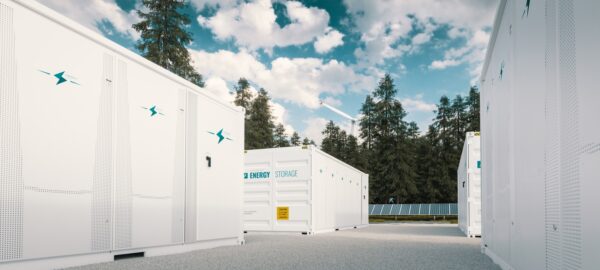
Although energy storage has been a notion for many years, new solar power-producing methods have recently gained a lot of attention. Over the past few years, there has been a significant increase in the number of companies going off the grid, and this trend continues to rise.
The development of solar battery technology has advanced significantly along with the surge in interest in solar energy on a global scale. Modern solar power storage systems have fascinating advancements in every area and are more inventive and effective than before.
Although lead acid batteries are less expensive, they require regular maintenance to keep them in good working condition and have a shorter lifespan. Although lithium batteries are significantly more expensive, they require no maintenance and have a considerably longer lifespan to justify their premium cost. We will compare both types of batteries and recommend what’s best for your commercial solar system.
Lead Acid Batteries
It is the most prevalent kind of rechargeable battery. They can be recharged hundreds of times without failure because they store energy using lead plates submerged in sulfuric acid.
Due to the electrolyte’s transformation into a putty-like gel after silica is added, some lead acid batteries, referred to as gel batteries, perform better than conventional lead acid batteries.
A tried and tested technology with lower prices, lead acid requires routine maintenance and has a shorter lifespan.
Lithium Batteries
Although lithium batteries are newer than lead acid batteries, they are replacing lead acid ones because of their superior performance in many areas. When a lithium battery is discharged, lithium ions migrate from one electrode to another through an electrolyte, and when the battery is recharged, they move back.
Although lithium is a premium battery technology with a longer lifespan and greater efficiency, the added performance comes at a higher cost.
Comparing Lead Acid Batteries and Lithium Batteries

Lithium can replace lead acid technology, although this technology still has certain advantages. However, some solar users still prefer lead acid batteries’ consistent, dependable performance. Make sure you comprehend the differences between lead acid and lithium batteries and decide which will best support your power needs if you are looking for a source for wholesale solar batteries.
You can continue reading to find out more about the differences between lead acid and lithium batteries.
1. Charge Cycle
A single charge cycle describes the process of using solar panels to charge a battery. Battery life is assessed in terms of how many charge cycles they can withstand before failing, not in months or years but in charge cycles.
You can take the idea of a car. The mileage of a used car is a considerably more significant factor than the year it was created when determining its condition. The same holds for batteries and how many charge cycles they have experienced.
2. Capacity
The depth of discharge describes how much of the battery’s capacity is used before it is replenished. For instance, the depth of discharge would be 50% if a battery’s capacity was used up to 50%.
It is recommended against running lead acid batteries to more than 50% discharge. Excessive battery discharge can reduce the battery’s lifespan.
The useable capacity of lithium ion batteries is higher because they can easily tolerate deep discharges of 80% or more. More efficiency in the system leads to faster charging times. It could also mean buying fewer solar panels and a smaller backup generator, depending on how your system is set up.
3. Efficiency
Lithium ion batteries outperform lead acid batteries in terms of efficiency. As a result, more solar energy is being saved and utilized.
Depending on the model and condition, lead acid batteries only have an efficiency range of 80 to 85%. This means that if you have 1,000 watts of solar energy entering the batteries after charging and discharging, there will only be 800 to 850 watts left.
On the other hand, lithium ion batteries have an efficiency greater than 95%. Thus, you would have access to more than 95 watts of power.
4. Charge Rate
Additionally, lithium ion batteries can manage higher charger amps. This indicates that they can be recharged considerably more quickly than lead acid batteries.
The amount of charging current that lead acid batteries can handle is limited. The main reason is that if charged too quickly, they overheat. The charging rate decreases when you approach maximum capacity.
5. Density Of Energy
A lithium ion battery is substantially heavier than a lead acid battery of equal capacity. While most installers have no trouble with this, installing the batteries in your solar energy generation system alone may be fairly difficult.
Lithium ion batteries offer a substantially higher battery density than lead acid batteries. This implies that more storage can be accommodated in a smaller area.
For instance, eight lead acid batteries are normally used to run a 5.13-kilowatt system. However, using just two lithium ion batteries would do the same task. As a result, if you consider the size and weight of the full battery bank, lead acid batteries weigh more than lithium batteries.
6. Environmental Impact
Lead acid batteries are not environmentally friendly. Lead acid batteries require substantially more raw materials than lithium ion batteries to produce a comparable degree of solar energy storage capability. We know that using more raw materials results in a larger carbon impact.
In addition, the lead acid business uses a lot of energy. Energy is needed to create the battery. As a result, a significant amount of pollution is released into the environment.
Although lithium in lithium ion batteries comes from mining, each battery uses less material, reducing the environmental impact. Manufacturers of lithium ion solar batteries are also considering using renewable energy sources, which may have an incredibly low carbon footprint.
Consider a manufacturing facility that produces batteries for storing renewable energy while also being powered by renewable energy. Lithium batteries win in this situation.
What Should You Choose: Lead Acid or Lithium Ion?

While both battery types have almost comparable long-term costs, lithium ion batteries require a substantially higher initial outlay. We, therefore, wouldn’t advise them to individuals who won’t be using their solar energy generation equipment daily.
Which battery is ideal for you depends on elements like what kind of solar energy producing system you want and how you’ll use it. Following are the types of batteries you might want for your commercial solar panels.
Establishment of Full-Time Off-Grid
If you can do daily maintenance, use FLA or premium lithium ion batteries for heavy use for solar power generating systems that will be operated continuously in an off-grid setup.
Perfect for Off-Grid Use
Most people who own off-grid vacation properties or hunting cabins go there occasionally. This implies that you won’t be able to do lead batteries’ mandatory routine maintenance. Lead batteries are your best option. They don’t need any maintenance; even if they are left unused for a few months, they won’t go flat.
Battery Backup System
Imagine you are developing a power-producing system with battery storage to act as a standby during power shortages. You’ll use the system less often or only when the local power grid is unreliable. You won’t need lithium ion batteries if you don’t use the system much.
On the other hand, lead batteries can be a wise choice. But once more, they need routine maintenance, which can be annoying given that the system will only be utilized sometimes. You must consider your preferences before buying a battery for your solar system.
Industrial Facility
You’ll be making the same decision for industrial use. Lithium ion solar batteries may be a wise investment for heavily used off-grid industrial facilities. However, lead batteries can be a more economical option when powering basic monitoring equipment at an off-grid outpost. However, you don’t have to worry about planning routine maintenance trips.
Contact Coldwell Solar for Commercial Solar Installation
Companies will move toward solar power generating, and energy storage solutions as fossil fuel prices continue to rise and global emission requirements continue to tighten. The type of solar battery technology you need depends on your needs and budget. We have discussed in detail lithium ion batteries and lead acid batteries. You can choose one according to your preferences and needs.
If you want to install commercial solar panels and go green to save the environment and fight climate change, contact Coldwell Solar for detailed information regarding commercial solar panel installation.

